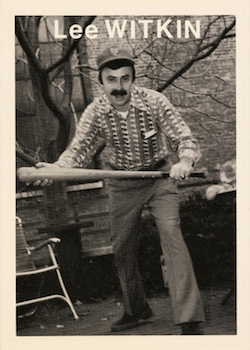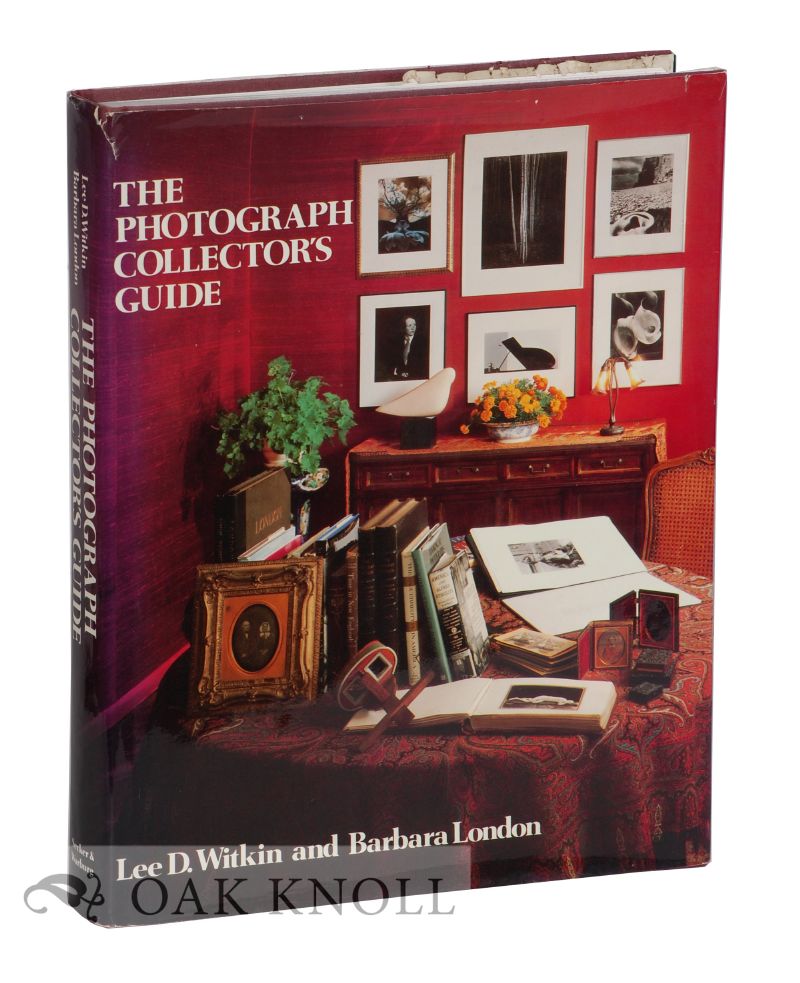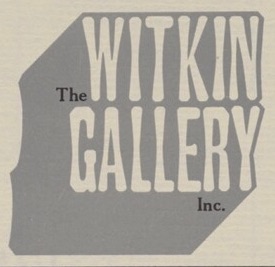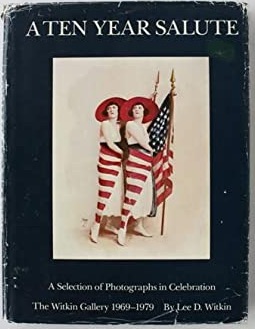 [Lee Witkin opened his pioneering, eponymous photography gallery in 1969, the year after I published my first column of photography criticism in the Village Voice.
[Lee Witkin opened his pioneering, eponymous photography gallery in 1969, the year after I published my first column of photography criticism in the Village Voice.
This interview was conducted at Lee Witkin’s apartment on 57th Street, which was within walking distance from his gallery, then located in the Fuller Building at 41 E. 57th. It took place on September 9, 1980. Under the title “Interview: Lee Witkin,” this appeared 40 years ago in the short-lived magazine Photoshow (Vol. 1, no. 4, May 1981). Part 3 appears below. Click here for Part 1, and here for Part 2. — A.D.C.]
•
Interview: Lee Witkin (conclusion)
ADC: … When we spoke on the phone the other day, you said that recent experiences had provoked you to the point where you’d be willing to say some things you hadn’t been willing to say before. What are some of those those things that haven’t come up in our discussion so far?
LW: It should be said that not everybody is going to make a million dollars by opening a photography gallery. The way to fame and fortune seems now to open one, and to go at it as if you were launching a full-fledged attack against another nation. Also, I’m getting very tired of the cliqueish world that exists in photography — the people who think that by banding together, in small groups or large groups, they can control the destiny of an art form. …
I think that art is too alive and unexpected to try to put a fence around it and call yourself a fence. Also, I never went and opened a gallery to be in open warfare with a lot of other people. I opened a gallery — and you know very well, because you were there — to be happy, to have a small little thing where my friends came up, where perhaps I made new friends, where people could talk and see things. … That was my naïveté, but it was only naïveté because I succeeded; if I had failed, my naïveté would have stayed intact. I would still have my friends coming up; I would still be reading Proust. (Laughs). What I didn’t perceive were the consequences of having a commercially successful enterprise. …
I can understand competition, but there are two kinds of competition: there’s competition that is healthy, that allows the other man to live, and there’s a competition that is out to destroy and kill. Unfortunately, we live in a time in American society when destroy and kill is almost synonymous with competition. You do not allow your competitor to exist; you either destroy him or you buy him out. And this is true — if you look around you — in hotels, restaurants, everything. This is what I find despicable.
I don’t see why I can’t do what I’m doing and be left relatively alone. I don’t see why the fact that I exist and do my thing poses a threat to other people. … I didn’t open a gallery to be in open warfare and to hurt other people, or to be hurt. I opened a gallery with the best intentions in the world, and the most modest, and I refuse to be turned into a killer in order to survive. I may be a grouchy old man, and a spoilsport, but I’m not a killer.
And the very fact that I’ve come this far in the midst of what’s happened must mean that I have a guardian angel of no small power. Because, when you think about it, the odds against my surviving — I have no personal fortune, I have no connections of note, I have no one behind me but myself. Considering that some of the biggest wheeler-dealers and the biggest capital budgets have gone into the field against me, it’s amazing that I’ve kept my head, or at least my left nostril, above water. But I’m finding it very tiring, very discouraging; and I’m finding more and more that I have tsuris — grief — instead of pleasure. …
The pressure has built up to such a degree that the pleasure is diminishing rapidly. I personally find being middle-aged to be enough of a shock — a middle-age crisis, a mid-life crisis — but to find my business itself in a mid-life crisis along with me is almost more than mortal flesh can bear. And I suppose the truth is that this is the way it is, and the way it always has been, for everybody; it’s just part of the play, and when you get to that page of the script you have to read what’s written there.
•
LW: People today are producing photographs and books with nothing to say. That’s what we’re being surrounded with. When we started out [in 1968], it was just the reverse: there was a hundred and thirty years of material by people who had something to say whom no one had listened to. Part of the excitement of photography is that hundred and forty years. I think if you isolate the last five years of photography and look at what’s been done, it’s not that much more exciting than what’s been done in painting or any other field.
The excitement of photography is the simultaneity of the discovery and appreciation of one hundred and forty years. That’s why, when people say, “Isn’t photography great?” they’re confusing yesterday with today. Because Talbot, and Cameron, and Moholy-Nagy — they’re not turning out prints in the last five years — and W. H. Jackson, Brady, and all those people. That’s crystallized for me. When people say “Isn’t photography wonderful?” you start thinking everyone’s doing great things, and it’s not true at all.
The same percentage of good work is being turned out today as in any other medium, which is not that much. But we are inundated by the masterwork of 140 years that has never been studied. That’s why everyone thinks, “Isn’t photography great!” Well, of course it’s great, but that doesn’t mean it’s all happened in the last five years — we’ve just started to discover it.
These young precocious photographers who go around saying, “I’m a photographer,” are just cashing in on the glory of the Camerons and the Imogen Cunninghams and the Steichens and the Stieglitzes; they’re just riding the crest of the wave of these people. Because if you were to examine the last five years, there’s not much to get excited about, in my opinion.
•
LW: I basically have kept to what I was in the beginning. My gallery is run for the people who love to come and look at the prints and buy the prints, or look at the prints without buying them, to read the books — basically, my gallery is the same as it always was. I may be making more money and spending more money.
And I may be on Madison and 57th, which is an accident — I was looking for a space for two years, anywhere in New York City. It just happened that that space was available; it had been a gallery, so there was a minimum of modification to be done to it; and it was a really good rent. I did not move to “Madison and 57th Street” thinking in those terms, which a lot of people seem to feel I was doing. Just the way they seem to feel I opened a gallery knowing that photography was going to be the biggest thing on two feet. It’s been dumb luck.
But I think my gallery is a place where people love to come and to be comfortable and happy; and despite the odds and despite the pressures I’m still trying to do what I started out originally to do, which was to create an environment, a sanctuary, for people who cared about the same things I cared about. And to make it as complete a gallery as possible for these people.
And that’s what I’m into. I’m not into distributing to other galleries around the country. I’m not into controlling the lives of photographers and their output. I’m really a shopkeeper, and I love being in my shop; I love handling my wares, and I love — a lot of the time — the people who come to me. But all the difficulties which we’ve talked about have been imposing themselves on this basic, simple premise of my — and the gallery’s — existence. That’s basically what we’ve been talking about: How did something that was in the beginning so easy and simple become what it has?
•
LW: I don’t know why art has become so snobby, exclusive — and so depersonalized. Art, of all things, is the most personal thing in the world; why should it have been depersonalized? Interesting. I don’t know. I think the biggest mistake is art becoming big business, because for art to be big business is anti-art. The value of art should be in enriching people — being functional, esthetic, instructive — not in creating a status symbol or an investment.
But this has happened. It’s a product of the age we live in. It’s something that I find to be mixed up with all the things we’re talking about. Art as the ultimate investment. It probably has to do with the emergence of an enormous middle class with leisure time, economic capacity, and pretenses — and a network of businessmen who are fleecing them, on all levels, and a network of museums and critics who are fleecing them on all levels.
I still believe that art is only as good as the human being who produces it and the human being that perceives it. It’s a very personal thing.
ADC: Where do you see the gallery going at this point? Do you have a five-year plan, or a two-year plan?
LW: No, actually I have a six-month plan, because that’s when the lease is up and the rent will be quadrupled.
ADC: Quadrupled?
LW: Quadrupled, my friend. … Just as photography has been integrated into standard art galleries, I would like to integrate more standard forms of art into my gallery. I really want to see that line between photography as a medium and photographers as creative artists just taken out. Unfortunately, we live in an age of specialization, and I have a specialized audience and a specialized reputation. The people who want to buy good American etchings would not come to me at this point, because I sell photographs. So if I show the etchings I lose my audience for photographs, and the etching audience wouldn’t know that I’m there to come to.
So I see — if I do that — undergoing a period of transition. I don’t wish in any way to identify myself with the great Alfred S. [Stieglitz], but this is exactly what he did — he integrated his whole gallery and treated many things. Of course he had lean days, and finally ended up on the rubbish heap. But that’s what I would like to do; I would like to have a gallery that was free enough so that I could show anybody whose work I admired. I think that would also free me from having to be associated only with photographers and photography galleries. I would like that very much.
 I would like, in some way, to make my operation smaller, so that I could handle the work that has to be done with fewer people than I have. I would like in some way to relieve all the pressures — the bigness of it — but whether I can do that or not I don’t know. It certainly is a time of change for me — one, because I have to either renew the lease at a tremendously new high rent, or find another space; and, two, make the decision as to what I’m going to show. Is it just going to be the work of master photographers, or is it going to be the work of master artists incorporating the work of master photographers? I really feel that the latter is where my heart is. Photography doesn’t need to be isolated anymore. …
I would like, in some way, to make my operation smaller, so that I could handle the work that has to be done with fewer people than I have. I would like in some way to relieve all the pressures — the bigness of it — but whether I can do that or not I don’t know. It certainly is a time of change for me — one, because I have to either renew the lease at a tremendously new high rent, or find another space; and, two, make the decision as to what I’m going to show. Is it just going to be the work of master photographers, or is it going to be the work of master artists incorporating the work of master photographers? I really feel that the latter is where my heart is. Photography doesn’t need to be isolated anymore. …
Whether there’s a place in the New York scene for an eclectic gallery, I don’t know. It could be that people are so geared to go to slots that they wouldn’t know what to make of a place that had something different every two months. I suppose the only way I’ll find that out is by doing it. But I feel that maybe I should try it. I feel at the end of my rope after twelve years of doing what I’ve done, and I think I should try for some change. The only thing that can happen is what happened when I opened the gallery to sell photographs — is that I can fail. Which sometimes isn’t the worst thing.
ADC: You get to read a lot of Proust.
LW: I get to read Proust, and take walks in the country; I can actually talk to my friends instead of being interrupted by telephone calls.
•
LW: Basically the experience has been a joyous one. I never would have known such wonderful people, such creative people, or been exposed to so many marvelous works of art, friendships, journeys … It really is unfair; probably all the things I’ve said have been the negative things, which have been piling up. But by far the positive things — which have to do with the human side, the people I’ve come in contact with — are the things that, in fifteen years, will seem the most important to me. They do now — it’s just that I’m in a little bit of pain. … [It] has basically been a time of incredible pleasure and enrichment for me.
•
This post supported by a donation from Arthur Ollman.
•
 Special offer: If you want me to either continue pursuing a particular subject or give you a break and (for one post) write on a topic — my choice — other than the current main story, make a donation of $50 via the PayPal widget below, indicating your preference in a note accompanying your donation. I’ll credit you as that new post’s sponsor, and link to a website of your choosing.
Special offer: If you want me to either continue pursuing a particular subject or give you a break and (for one post) write on a topic — my choice — other than the current main story, make a donation of $50 via the PayPal widget below, indicating your preference in a note accompanying your donation. I’ll credit you as that new post’s sponsor, and link to a website of your choosing.
And, as a bonus, I’ll send you a signed copy of my new book, poetic license / poetic justice — published under my full name, Allan Douglass Coleman, which I use for my creative writing.









That era, and Witkin’s aura, are palpable and bittersweet in this memorable interview, Allan.
Lee comes across as an honorable and ethical man, wary, weary, and reluctantly wise regarding realities thrust upon him at a pivotal point in photo history. In a luminous moment of reflection, Lee comfortably confides to a trusted friend with collegial candor and open-ended introspection.
Your interview enlightened and engaged this reader more than 40 years later.
Lee’s personal certitude and moral balance, his values, ethics, and personal drives, his wish for simple honest dealings, his distrust of groups and certain unnamed individuals, not to mention his belief in a higher purpose and standard for artistic commerce, appear to be leading him toward a resolution of inner struggles and toward a soulful peace regarding business in general and life most specifically. I hope he found and enjoyed that lush valley in the years following this interview, and preceding his early death.
He “sounded” well on his way.
Lee’s guiding principals are perhaps atypical to or for professional success, but as such they give an additional, alternative perspective on the art of business and the business of art. His musings offer suggestions for navigating one’s public life while remaining true to one’s private self. Valuable lessons for any generation to absorb. Lessons and some valuable history which would have been lost were it not for your efforts, Allan. Another extraordinary excerpt from your vast and varied archives! In Lee’s words, I also “still believe that art is only as good as the human being who produces it and the human being that perceives it. It’s a very personal thing.” Thank You Allan for sharing your own personal art with each and all of us, your many fans!
Happy New Year!